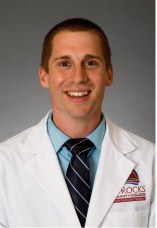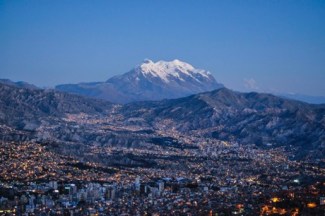My name is Austin Ethridge, I am a physician assistant student from Red Rocks Community College PA program who has been fortunate enough to have completed my pediatric rotation with Dr. Chris in Frisco, Colorado, this month. Dr. Chris has extensive experience providing care to the pediatric residents of Summit County, having established her practice here in 2000, following 20 years as a pediatrician on Saipan, in the Northern Mariana Islands, southeast of Japan. She has a unique perspective on high altitude health, having transitioned from sea level to the 8000′ and above elevations unique to Summit County. Since moving here, she has been advocating for more in-depth medical research regarding the needs specific to these high-altitude communities. We are here in her office today at the Ebert Family Clinic to discuss neonatal oxygen use in Summit County.
Dr. Chris, based on your experience, why do neonates need oxygen at a higher elevation? Is it because they need to acclimate?
Yes, that’s basically it, and smaller lung size at birth.
Yes, that’s what I read. Basically, the maternal physiology compensates for the higher altitude. When the infant is born, their lung size and physiology need to catch up to the altitude.
Based on your practice, when do you place neonates on oxygen?
Usually at 89% or below, but you see, that’s just it. Many parents ask why their children need to be on oxygen when neither themselves nor their siblings were on oxygen. One of the primary reasons that this has become more of an issue is the less invasive methods of measuring oxygen saturation in the blood. Before the 1990s, the only time to measure oxygen saturation in a newborn was if a concern for illness or pulmonary problems existed, which was completed by obtaining an arterial blood gas, a very invasive procedure. Do you know at what oxygen saturation level we begin to detect cyanosis in neonates?
Around75%, which means before the pulse oximeter used today, we had no idea if the infant’s oxygen saturation was in the 80s! Now that we have the pulse oximeter, we have access to so much more information. And this is why it is essential to determine the normal oxygen levels for these infants at higher elevations.
Does this include cyanosis or blue discoloration of the hands and feet, or is it just central as in the face and chest?
The blue discoloration of legs and arms do not count; this is very common and not concerning, only the discoloration of the trunk and face.
Yes, based on the articles that I have been reading while I have been here, there are not many studies that reflect normal oxygen saturation in neonates at a higher elevation. Most of the articles that I did find determined that newborn oxygen saturation is lower at elevations of around 6000’, with average values within the range of 89-96% SpO2 compared to greater than 97% at sea level. However, there could be a significant difference between 9000’-10000’ feet and the 6000’ in these studies.1-3
That is exactly right, and that is why I want to do a study here in Summit County to determine the average oxygen saturation at these altitudes.
On average, how many newborns do you place on oxygen in Summit County?
About 40% of newborns are placed on oxygen due to low oxygen levels at birth, and I would say that less than 5% will still need oxygen after their two-week visit; however, this rate may be higher in those that live at elevations of 10,000′ or greater. In general, studies have observed that the lowest oxygen levels tend to occur around the 4th day of life and then improve from this point onward. What is the main complication that we are worried about in infants that have low oxygen levels?
Pulmonary hypertension. At birth, when the fetal circulation is shunted back through the lungs, the pulmonary pressure decreases to allow this to happen. If the oxygen levels are too low, the vessels in the lungs may not dilate enough, and this could lead to elevated pulmonary pressures. I read an interesting study that found increased pulmonary pressures in Tibet children as measured by ECHO cardiogram until the age of 14. These pressures were noted to increase with increasing elevation but to decrease with increasing age. Generally, by the age of 14, the pulmonary pressures had normalized; the authors considered this to be a normal physiological response. However, it is worth noting that these children in the study came from generations of individuals that have always lived at these altitudes.4-5
That is correct. That is the difference between adaptation and acclimatization. Many of the children that live up here are acclimatized, meaning that their bodies have adapted on a physiological level, but their genetics remain the same. However, adaptation is observed in many families that have lived at high elevations for generations; in these instances, the changes have occurred at the genetic level.
That makes sense; so the data from some of those studies may not directly apply to the population here.
That is correct. Are we worried about brain damage in this setting of low blood oxygen levels?
No, I do not think so.
We are not! In fact, as an example of this: when I was in Saipan, there was a child that had a cyanotic, congenital heart defect that was unable to be repaired for social reasons. This child always appeared blue, and his oxygen saturation would have been very low. He did just fine in terms of development and progress in academics. There were no signs of developmental delay or any other neurological problems at all.
Are there any resources you recommend for parents whose newborn may need to be on oxygen?
Yes, I have a handout that I provide to all families whose infants are on oxygen. (View Dr. Chris’s handout here.)
Are there any red flags or signs that the newborns’ oxygen may not be high enough when they are sent home? Is there anything parents should look out for? I know that you mentioned the oxygen level needs to be as low as 75% before there are any signs of concerning central cyanosis.
No, there really are no clinical signs. A company called Owlet produces a sock for the newborn’s foot that monitors oxygen saturation. I am not sure how accurate this is, but if the parents really want to do something to monitor the oxygen level, this could be a way to do so. It is pretty expensive. On an aside, we are currently in communication with this company regarding future opportunities to conduct research using their product with regards to newborn oxygen saturation at higher elevations, so stay tuned for more developments on this topic.
Are there any risks to starting the infant on oxygen?
No, not at the level that these newborns are sent home on. In premature infants, there is a risk associated with oxygen therapy for eye and lung disease. However, these premature infants are placed on very high flow rates and positive pressures. The damage is actually caused by the pressures of the oxygen being too high. This is not the case for the newborns that we place on oxygen.
Are there any risks to infants or children growing up at high altitude?
Yes, there is some evidence of a very slight increased risk of pulmonary hypertension, but this is very rare.
Thank you so much for taking the time to discuss this, Dr. Chris!
References
- Ravert P, Detwiler TL, Dickinson JK. Mean oxygen saturation in well neonates at altitudes between 4498 and 8150 feet. Adv Neonatal Care. 2011 Dec;11(6):412-7. doi: 10.1097/ANC.0b013e3182389348. Erratum in: Adv Neonatal Care. 2012 Feb;12(1):27. PMID: 22123474.
- Morgan MC, Maina B, Waiyego M, Mutinda C, Aluvaala J, Maina M, English M. Oxygen saturation ranges for healthy newborns within 24 hours at 1800 m. Arch Dis Child Fetal Neonatal Ed. 2017 May;102(3):F266-F268. doi: 10.1136/archdischild-2016-311813. Epub 2017 Feb 2. PMID: 28154110; PMCID: PMC5474098.
- Bakr AF & Habib HS, Normal Values of Pulse Oximetry in Natewborns at High Altitude. Journal of Tropical Pediatrics 2005; 51(3) 170-173.
- Qi HY, Ma RY, Jiang LX, et al. Anatomical and hemodynamic evaluations of the heart and pulmonary arterial pressure in healthy children residing at high altitude in China. Int J Cardiol Heart Vasc. 2014;7:158-164. Published 2014 Nov 12. doi:10.1016/j.ijcha.2014.10.015
- Remien K, Majmundar SH. Physiology, Fetal Circulation. [Updated 2020 Aug 11]. In: StatPearls [Internet]. Treasure Island (FL): StatPearls Publishing; 2020 Jan-. Available from: https://www.ncbi.nlm.nih.gov/books/NBK539710/
- Thilo EH, Park-Moore B, Berman ER, Carson BS. Oxygen Saturation by Pulse Oximetry in Healthy Infants at an Altitude of 1610 m (5280 ft): What Is Normal? Am J Dis Child. 1991;145(10):1137–1140. doi:10.1001/archpedi.1991.02160100069025

Austin Ethridge is a second-year physician assistant student at the Red Rocks Community College Physician Assistant Program. Originally from the Colorado front range, Austin attended the University of Northern Colorado where he obtained both a bachelors and masters degree in chemistry prior to attending PA school. In his free time, Austin enjoys spending time with his friends and family, reading, and cycling.



































